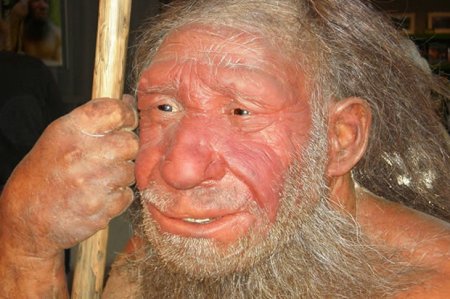L
LequteMan
Guest
Scientists from Germany have unlocked genetic secrets from a thigh bone of one of the earliest humans who roamed western Siberia 45,000 years ago.
The Neanderthals (or Neandertals, from German: Neandertaler) are an extinct species of human in the genus Homo. They are closely related to modern humans and differ in DNA by just 0.12%, according to Wikipedia.
Prof. Svante Paabo and his colleagues from the Max Planck Institute in Leipzig said on Tuesday that it was the oldest genome sequence researchers had ever decoded from a bone of a modern human form outside Africa.
The Leipzig institute was the world's top centre for studying DNA from ancient hominins and it has analysed material up to 400,000 years old.
Paabo said the man was genetically midway between Europeans and Asians, which indicated that he lived close to the time before the human species separated into different racial groups.
He said the bone was found in 2008 near the river Irtysh in western Siberia, close to Ust’-Ishim settlement.
Paabo said the genetic secrets analysis revealed that the man's ancestors had interbred with Neanderthals between 50,000 and 60,000 years ago.
``This gives scientists a clearer understanding of the mixing that took place between Ust'-Ishim man and the ancestors of modern humans,’’ he said.
``Until now, scientists had dated the intermingling of modern humans with Neanderthals to a period of between 37,000 and 86,000 years ago,’’ he added.
Paabo said the DNA sequence contained longer segments of Neanderthal material than the ones found among Eurasians today.
He said through research, his team could even estimate how often mutations took place in our DNA, calculating that between one and two mutations per year had accumulated in the genomes of populations in Europe and Asia since the Ust'-Ishim man lived.
The Leipzig institute is the world's top centre for studying DNA from ancient hominins. It has analysed material up to 400,000 years old.
Bence Viola, a co-author of the study, said "Ust'-Ishim man was one of the oldest modern humans to have been found outside the Middle East and Africa.
He said the man from Siberia was directly related to the ancestors of modern humans.
Viola said two other studies earlier this year showed that by having Neanderthal genes, the ancestors of modern humans were better able to adapt to the cooler climate outside Africa.
#Nigeria #DNA #Neanderthal

The Neanderthals (or Neandertals, from German: Neandertaler) are an extinct species of human in the genus Homo. They are closely related to modern humans and differ in DNA by just 0.12%, according to Wikipedia.
Prof. Svante Paabo and his colleagues from the Max Planck Institute in Leipzig said on Tuesday that it was the oldest genome sequence researchers had ever decoded from a bone of a modern human form outside Africa.
The Leipzig institute was the world's top centre for studying DNA from ancient hominins and it has analysed material up to 400,000 years old.
Paabo said the man was genetically midway between Europeans and Asians, which indicated that he lived close to the time before the human species separated into different racial groups.
He said the bone was found in 2008 near the river Irtysh in western Siberia, close to Ust’-Ishim settlement.
Paabo said the genetic secrets analysis revealed that the man's ancestors had interbred with Neanderthals between 50,000 and 60,000 years ago.
``This gives scientists a clearer understanding of the mixing that took place between Ust'-Ishim man and the ancestors of modern humans,’’ he said.
``Until now, scientists had dated the intermingling of modern humans with Neanderthals to a period of between 37,000 and 86,000 years ago,’’ he added.
Paabo said the DNA sequence contained longer segments of Neanderthal material than the ones found among Eurasians today.
He said through research, his team could even estimate how often mutations took place in our DNA, calculating that between one and two mutations per year had accumulated in the genomes of populations in Europe and Asia since the Ust'-Ishim man lived.
The Leipzig institute is the world's top centre for studying DNA from ancient hominins. It has analysed material up to 400,000 years old.
Bence Viola, a co-author of the study, said "Ust'-Ishim man was one of the oldest modern humans to have been found outside the Middle East and Africa.
He said the man from Siberia was directly related to the ancestors of modern humans.
Viola said two other studies earlier this year showed that by having Neanderthal genes, the ancestors of modern humans were better able to adapt to the cooler climate outside Africa.
#Nigeria #DNA #Neanderthal


